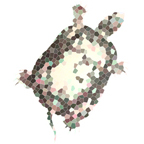 Paddling North, by Audrey Sutherland, Patagonia Books (www.patagonia.com), 2012, 171 pages, $22.95.
Paddling North, by Audrey Sutherland, Patagonia Books (www.patagonia.com), 2012, 171 pages, $22.95.
Paddling North is the story of Audrey Sutherland, who braves the Alaskan coastline solo in a nine-foot-long inflatable kayak. But from the start, the only thing that is cast off in this adventure is the reader’s sense of time, of place, and of Sutherland’s supposed passion for the trip she is about to undertake. On page one, Sutherland inauspiciously sets sail with a typo (“There seemed be total wilderness…”) paired with a bait-and-switch lede about an encounter with a grizzly bear that – spoiler alert! – ends up taking place not during, but in a last-few-pages flash-forward recollection two years after the close of her 800-mile paddle from Ketchikan to Skagway. Confused? Me too, especially given that Sutherland’s purported paddle plays out over two summers, but the narrative disingenuously unfolds in a single trip. Too, she never outright tips her wool cap as to when the trip takes place except through clues in the forward or sprinkled throughout the narrative like the occasional bear scat she encounters (the closest, really, she comes to interacting with bear): “Since that first voyage, I’ve paddled… 22 more years in Alaska and British Columbia,” and “It was only after 20 more years of paddling this country…”
Sutherland recounts her trip in a clipped, mechanical pace. Take for example her encounter with a family she comes across while traversing the Behm Canal: “Ahead lay a buoy – and a boat and people on shore by the cabin: three adults and three kids. My preference for solitude was balanced by their hospitality. In the morning, 12-year-old Rick taught me fishing techniques for the spinning reel and confirmed that I had been seeing mink.” It is surprising how much time, and yet how little substance, she can pack into three sentences that span late afternoon to early morning the following day. Or later, “I came back to the cabin and lit the fire I’d laid yesterday. Hot tea and rolls and change out of the wet clothes.”
Sutherland’s trek becomes less about place than about checking off stops on an itinerary, bouncing between uncertain Forest Service cabins and hot springs marked on her maps. Alaska’s Kodak moments become glancing mentions. Upon reaching Hole in the Wall – as good a place as any seemingly worth at least an adjective or two, right? – Sutherland remarks, “I paddled in good conditions to Hole in the Wall and through its slot. The narrow, high-sided pass opened out into a grass-lined bay. It [the bay] would be a good place to anchor for a bigger boat…” That’s it? Nothing about natural arches or rock formations?
At times, the entire story reads as though Sutherland padded her diary entries enough to make of them a story. So it comes as no surprise that the few times she drops snippets from her journal, the dairy entries aren’t all that different from the story narrative. They’re cursory, removed, distant. Overall, the narrative ebbs and flows as though reading over Sutherland’s shoulder her diary or a text or email. Could it be this jumpy, distant narrative stems from the 20-year gap mentioned above? In much the same way Sutherland hypothesizes John Muir’s Travels in Alaska, written 15 years after his adventures took place, reflects Muir glossing over the misery of his wilderness treks, perhaps the veneer of Sutherland’s exuberant passion and thrall about places explored and moments lived have similarly worn away over the passing score years. Sutherland’s difficulties balancing the past and present also come through in a device she leans on regularly, an awkward time-traveling transition in which she interjects from the present-day to note, “Later, I’d read… that a fox farm was here in 1923” or “Later, I read Vancouver’s own journal notes about this area”.
If nothing else, her writing – understated, muted, and numb – drives home the discomfort and perils of soloing frigid waters under uncertain weather conditions: choppy waters, sinister currents, the cold and wet and wind. The only warmth we experience is that of her admirable instinct to mend neglected oil and wood stoves, and the mouth-watering meals she prepares on them. There are no MREs or tinned meats. No, Sutherland makes it a point to wine and dine herself every step of the way: marinated artichokes, Romano cheese, cioppino, bacon, and mango apple cobbler; Sirah and sake and chablis and rum; and foraged cockles, limpets, and self-smoked salmons steaks. Such repasts prove creature comfort to author and reader alike.
Still, there are moments that break the ice, where Sutherland’s compassion stirs and her brevity is becalming. Writing about petroglyphs she finds along the rocky shoreline, we share a tender moment where she reflects on past inhabitants as she makes a rubbing of a glyph using her stuff sack and crushed fern. If only there were more treasurable moments like these, perhaps Paddling North would have stayed afloat. But at story’s end, there are no skin-of-your-teeth close encounters with bears as promised, no life-and-death experiences, no epic revelations or ah-ha moments to speak of. Just bear poop, a tipped kayak, and the author’s sense of self-accomplishment. Caught in these doldrums, Paddling North instead finds itself lost at sea.


#1 by Don Stephens on November 30, 2013 - 7:15 pm
Hi, Matt,
Are you familiar with Seattle author, Lyanda Lynn Haupt’s books?
I just finished her latest, “The Urban Bestiary” and found it so enjoyable and informative that, upon finishing the last page, I immediately turned back to the front and started it again…great read, just like her “Crow Planet” and “Pilgrim on the Great Bird Continent” (about Darwin in South America).
I’d invite your review of “The Ur…” and think your other readers would also appreciate learning of it.
Don Stephens